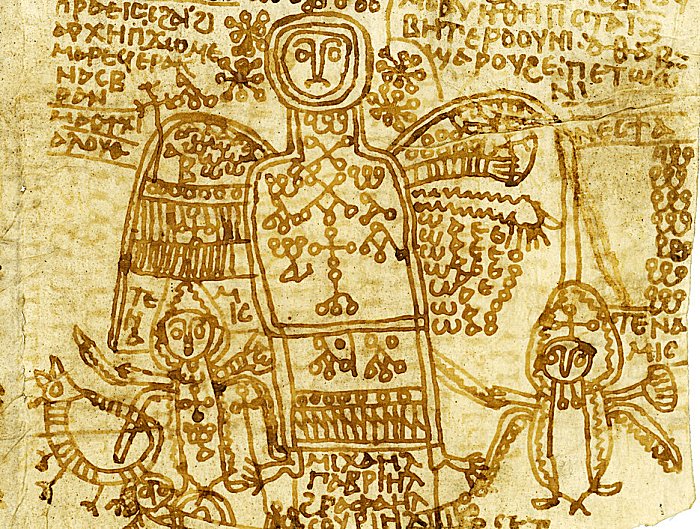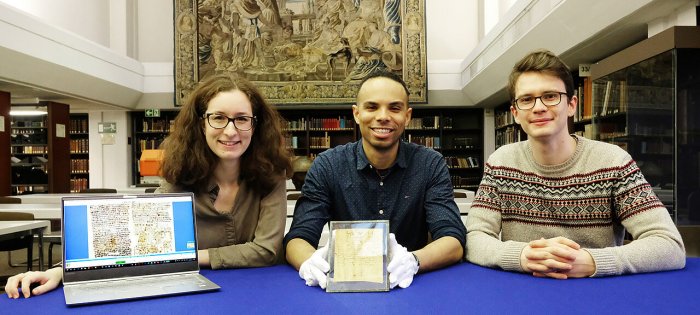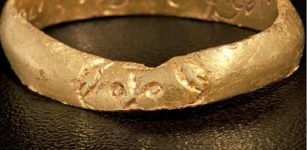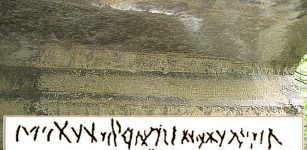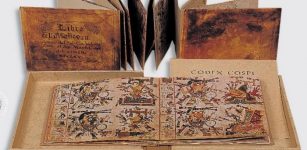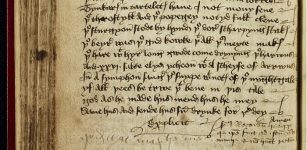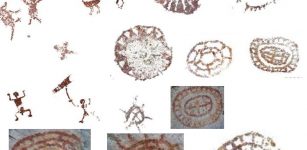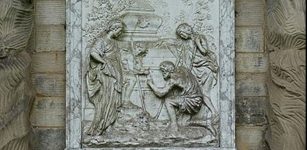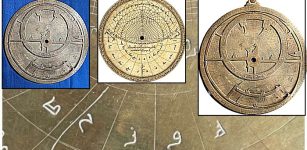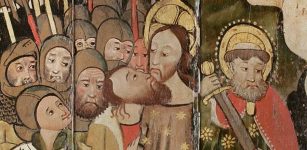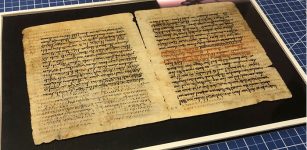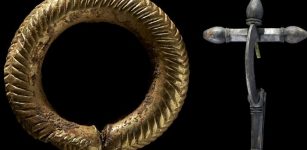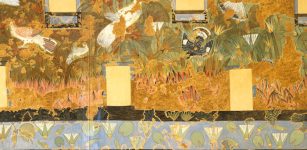Coptic Magic – How Did People Deal With Strong Feelings Of Love And Hatred In Antiquity?
Conny Waters - AncientPages.com - A group of academic researchers from the University of Würzburg dedicated five years to examining "magical" texts from ancient Egypt. Their efforts have culminated in a fascinating 600-page book dedicated to the subject of Coptic magic.
Coptic magic, which includes texts, diverse formulas was found written on papyri from Egypt in Coptic. These texts contain healing, curses, love, protection, divination spells, and rituals. The magical manuscripts contain magical recipes and applied texts; all of them emphasize their magical power.
The part of a papyrus shows the archangel Michael, who is accompanied by two angelic powers. Such images were used for many ritual purposes, for example, to heal illnesses, drive out evil demons, protect against robbers, or curse other people. Image credit: Elke Fuchs / Institut für Papyrologie, Universität Heidelberg.
The book is based on materials such as papyrus, parchment, paper, and fragments of clay known as ostraca, dated to the period between the 4th to the 12th centuries AD.
Secretly hidden at home or worn inside an amulet around the neck, these so-called 'magical texts were believed to possess various powers. They could cure diseases, cast spells on foes, or incite
feelings of passionate love or hatred. They could even offer a glimpse into the future.
The researchers, Dr. Korshi Dosoo and Markéta Preininger, are responsible for the publication.
They conducted their studies on texts that were all written in both Coptic script and language.
Coptic is the last stage in the development of the Egyptian language. It replaced Demotic around the 2nd century AD and was gradually replaced by the Arab conquest of Egypt in the 7th century.
"Around 600 of these texts have survived, but the largest published collection to date only
contains around 100 of them. The rest were previously scattered in numerous books and articles
and were therefore only accessible and known to a few specialists," says Korshi Dosoo, describing the initial situation of the project.
The project team at the start of work at the end of 2018 in the University Library's manuscript collection with (from left) Markéta Preininger, Korshi Dosoo and Edward O. D. Love. (Image: Gunnar Bartsch / Universität Würzburg)
The information contained within these texts can be categorized into several categories. However,
they primarily deal with protection from demons or death but also help make peace with enemies.
They also give a particular piece of advice regarding the fulfillment of more specific desires.
Males mainly used love spells. This magic was sometimes also intended to ensure that married couples separated again.
In medicinal practices widespread in ancient Egypt, magic played an important role as it served
as a remedy for fever, headaches, and sleeplessness.
No doubt, Christianity also affected the tradition of magic texts, which were of significant value
for the ancient Egyptians' private lives at the time.
"The Christianization of Egypt ended the cults of the numerous gods of the Pharaonic period,
but it did not end the belief in a world full of superhuman powers," explains Korshi Dosoo.
Instead, people transformed their former gods into angels and saints who served the almighty
God and into evil beings who wanted to harm his creation.
Accordingly, these manuscripts are "rich sources of information about daily life and religion
in Egypt in the last centuries of Roman rule and the first centuries after the Arab conquest," as the publisher writes.
"These documents serve as an important source of information about popular religion-the reality,
rather than the ideal, of religious practices and beliefs as they were lived and practiced in
everyday life," explains Markéta Preininger Svobodova.
The tradition associated with magical texts originating from Egypt dates back to 1928 when Karl Preisendanz, a renowned papyrologist, published the collection of texts known as Papyri Graecae Magicae (PGM). Despite its Greek title, this collection primarily comprised Egyptian papyri and was later expanded to include the Papyri Demoticae Magicae.
At the same, researchers emphasize that a comprehensive collection of magical texts in
Coptic script and language had been lacking until now.
"Thanks to JMU funding, Korshi Dosoo and Markéta Preininger have been able to begin to close
this gap with the volume that has now been published," explains Professor Martin Andreas
Stadler, Chair of Egyptology at JMU.
The researchers will continue their research because, for now, it is Volume 1 (Papyri Copticae Magicae"), which is completed and could be followed by several more - "presumably seven," estimates Korshi Dosoo.
More about the publication - here.
Written by Conny Waters - AncientPages.com Staff Writer

